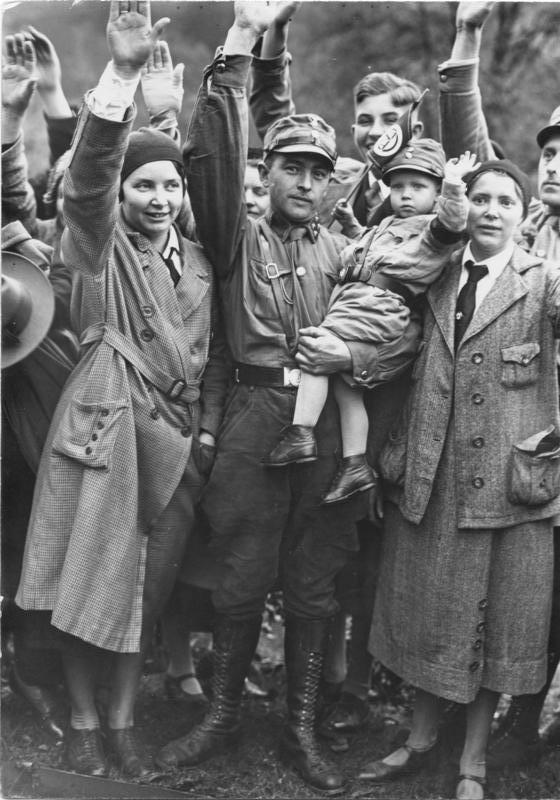Lots of national gestures have meaning behind them, but the Hitler salute, known in German as Der Deutsche Grub, carries such heavy connotations, that in certain parts of the world you can be arrested for doing it. But just where does this infamous salute come from?
Like many of the symbols of Nazi Germany, it was not created by the party. Adopted in the 1930s it is commonly believed that the salute was based on an ancient salute used by the Romans. Although there are no contemporary Roman texts that make reference to this salute, the Nazis can be forgiven for believing it was Roman as many 19th and 20th century plays, artwork and movies depicted the salute as ‘Roman.’ The first time the salute can be seen is in the Jacques-Louis David painting Oath of the Horatii created in 1784.
However, it wasn’t the Nazis who adopted this salute first, but the Italian Fascist party, who in turn adopted it from earlier Italian nationalist and proto-fascist Gabriele d’Annunzio. World War I hero, poet, playwrite and rabble rouser, d’Annunzio marched 2,600 volunteers into the city of Fiume (now Rijeka in Croatia) to claim it for Italy. There, as leader of the short-lived Italian Regency of Carnaro, he made use of many of the trappings that Mussolini would later co-opt including the title Duce, black shirted militia, and – more significantly for this article – the “Roman” salute.
This was an uncomfortable truth for the Nazis who despite the early role that Mussolini and the Italian Fascists had in shaping Hitler’s political ideology, had no wish to be seen as following in anyone’s footsteps. Instead Adolf Hitler himself helped create an ahistorical new narrative that bypassed Benito and stuck firmly to German, rather than Latin, roots.
“I’d read the description of the sitting of the Diet of Worms,” explained Hitler in 1942, “in the course of which Luther was greeted with the German salute. It was to show him that he was not being confronted with arms, but with peaceful intentions. In the days of Frederick the Great, people still saluted with their hats, with pompous gestures. In the Middle Ages, the serfs humbly doffed their bonnets, whilst the noblemen gave the German salute.
“It was in the Ratskeller at Bremen, about the year 1921, that I first saw this style of salute. It must be regarded as a survival of an ancient custom, which originally signified: ‘See, I have no weapon in my hand!’ I introduced the salute into the Party at our first meeting in Weimar. The SS at once gave it a soldierly style.”
One man stands alone with arms crossed as all around him people perform the Nazi salute.
For more answers to your history questions, pick up a copy of All About History today.


